MOROCCO: THE JEWEL OF NORTH AFRICA
By Logan MaContributing WriterThis is the second article in our 2015 Week of Photo Journals: Changing Perspectives. Check back each day this week to see more beautiful photography and travel accounts from UC San Diego students. Click on the images in the article to view the photos up close.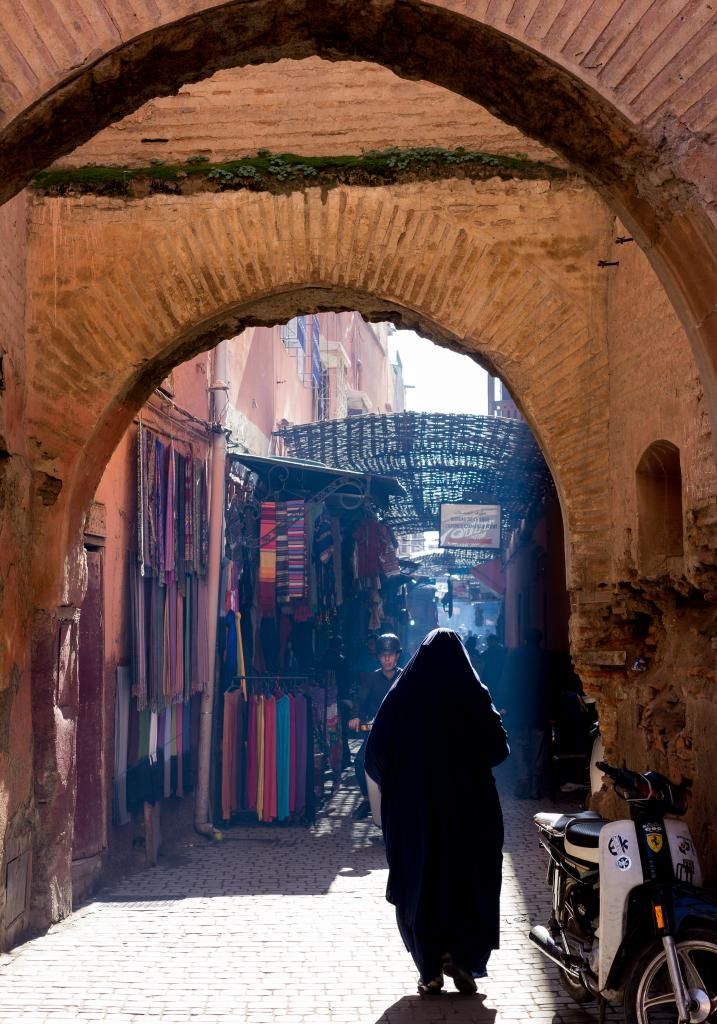 Old TraditionsIn a country where Islamic traditions run deep, Moroccan women are still expected to dress modestly. Recent years have seen a growing interest in Western fashion among the urban youth, but it is still common for women to wear clothes that cover themselves from head to toe.
Old TraditionsIn a country where Islamic traditions run deep, Moroccan women are still expected to dress modestly. Recent years have seen a growing interest in Western fashion among the urban youth, but it is still common for women to wear clothes that cover themselves from head to toe. Saadian TombsThese tombs are part of a larger mausoleum complex that is the final resting place of dozens of members of the Saadi Dynasty. From their capital in Marrakech, the Saadians resisted encroachments by Christian invaders from the North and the Ottoman Turks from the East, ensuring Morocco remained an independent kingdom generations after their demise. After they fell from power in 1659, their tombs faded from memory until rediscovery in 1917.
Saadian TombsThese tombs are part of a larger mausoleum complex that is the final resting place of dozens of members of the Saadi Dynasty. From their capital in Marrakech, the Saadians resisted encroachments by Christian invaders from the North and the Ottoman Turks from the East, ensuring Morocco remained an independent kingdom generations after their demise. After they fell from power in 1659, their tombs faded from memory until rediscovery in 1917.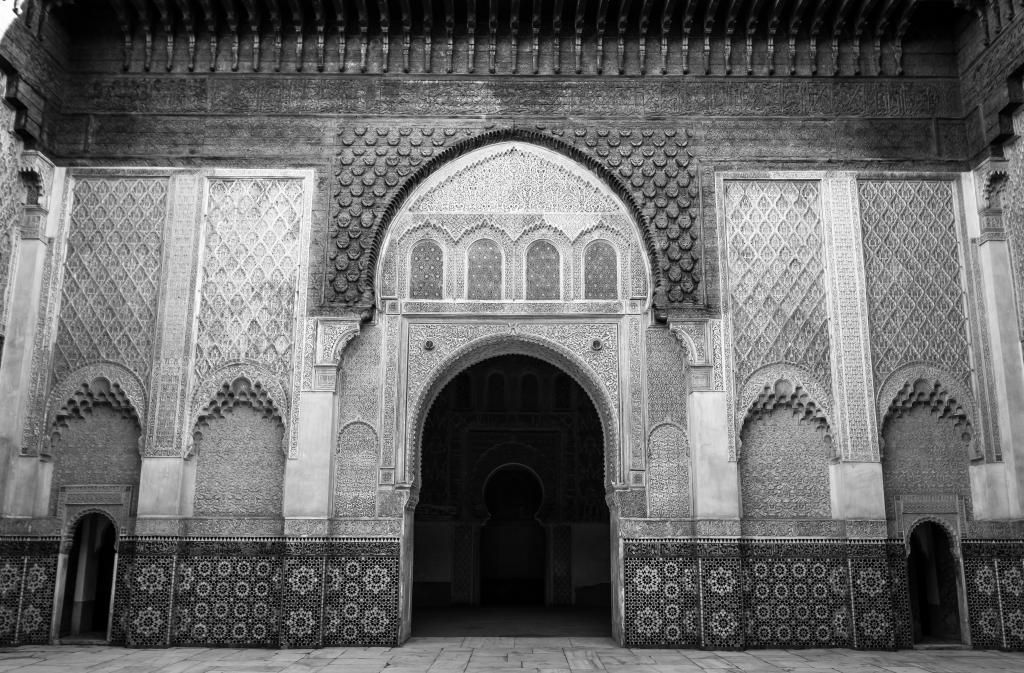 Ben Youssef Madrasa In ancient times, scholars congregated in theological colleges called madrasas to ponder the intricacies of Islam. Nowadays, they are some of the few religious buildings open to non-Muslims. Founded in the 14th century, the Ben Youssef Madrasa in Marrakech was one of the largest in North Africa. As per Islamic custom, Koranic inscriptions and geometric patterns decorate its walls in place of human or animal representations.
Ben Youssef Madrasa In ancient times, scholars congregated in theological colleges called madrasas to ponder the intricacies of Islam. Nowadays, they are some of the few religious buildings open to non-Muslims. Founded in the 14th century, the Ben Youssef Madrasa in Marrakech was one of the largest in North Africa. As per Islamic custom, Koranic inscriptions and geometric patterns decorate its walls in place of human or animal representations.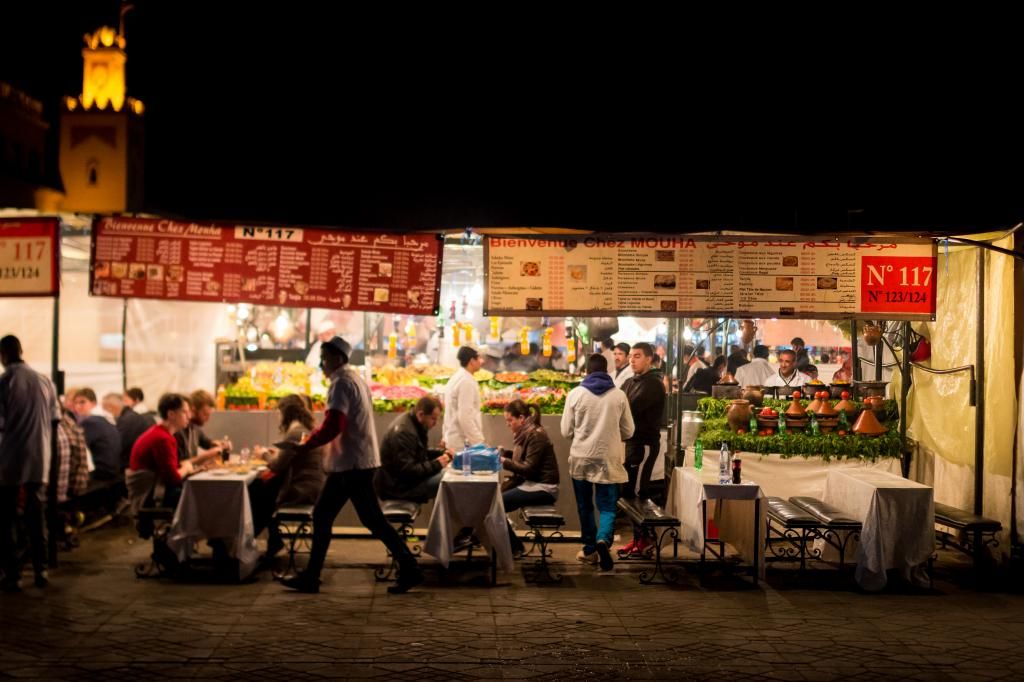 A night in Jemaa el-FnaaA visit to the old city of Marrakech is incomplete without stopping at Jemaa el-Fnaa, its main square. As night falls, the dozens of food stalls fill the square, offering delicious meals ranging from tagine and cous cous to sheep heads and snail soup. Stall 46’s tanjia, or slow-cooked lamb, is a must-try.
A night in Jemaa el-FnaaA visit to the old city of Marrakech is incomplete without stopping at Jemaa el-Fnaa, its main square. As night falls, the dozens of food stalls fill the square, offering delicious meals ranging from tagine and cous cous to sheep heads and snail soup. Stall 46’s tanjia, or slow-cooked lamb, is a must-try.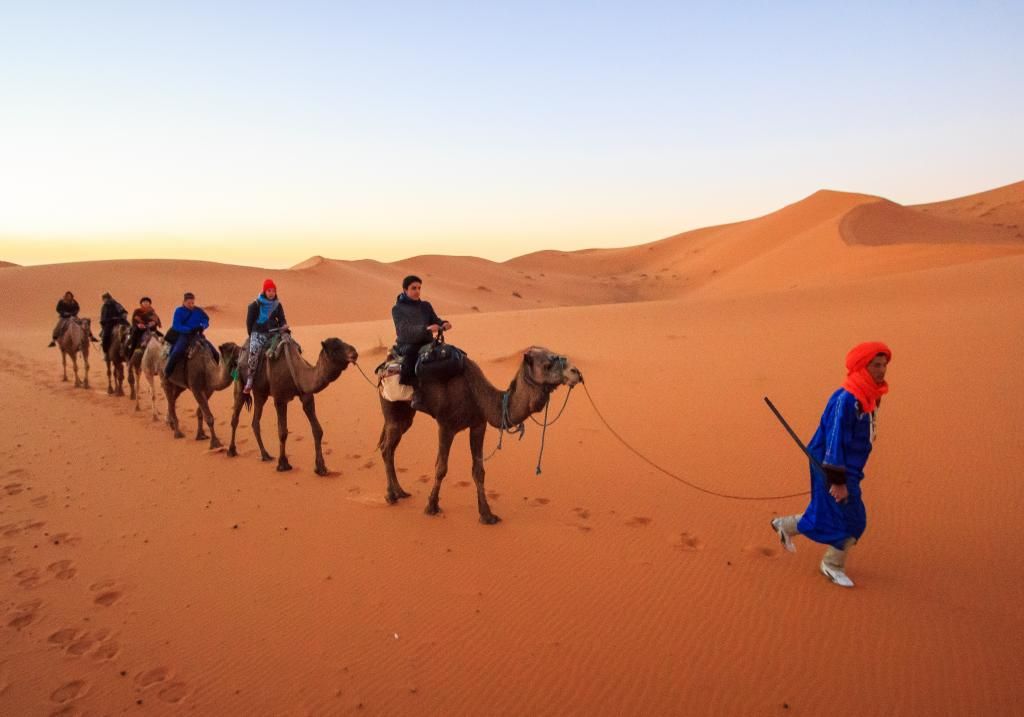 Into the SaharaA Bedouin guide leads a line of camel-riding tourists to a campsite in the Erg Chebbi dunes. Though frigid December nights make for a chilly stay, good company, delicious Bedouin food and the view of the nighttime stars more than make up for the physical discomforts.
Into the SaharaA Bedouin guide leads a line of camel-riding tourists to a campsite in the Erg Chebbi dunes. Though frigid December nights make for a chilly stay, good company, delicious Bedouin food and the view of the nighttime stars more than make up for the physical discomforts.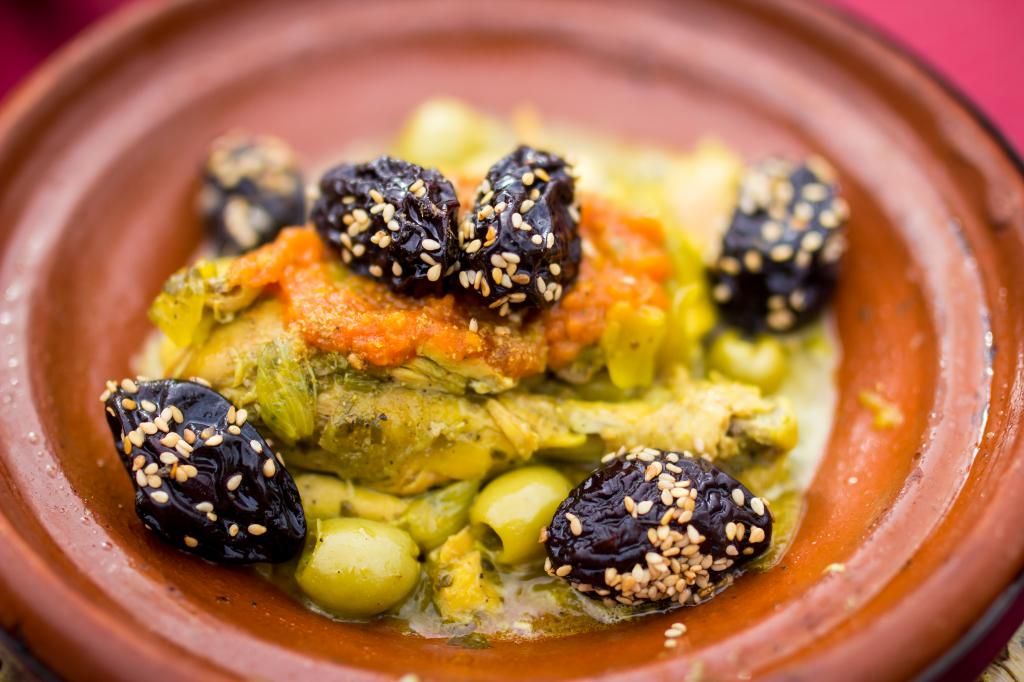 TagineA savory stew, tagine is a common item found on a Moroccan menu. Named for the cone-shaped clay bowl in which it is made, tagine typically consists of sliced meat, poultry, or fish slow-cooked with vegetables and fruit. This picture depicts a lemon chicken tagine served with dates.
TagineA savory stew, tagine is a common item found on a Moroccan menu. Named for the cone-shaped clay bowl in which it is made, tagine typically consists of sliced meat, poultry, or fish slow-cooked with vegetables and fruit. This picture depicts a lemon chicken tagine served with dates.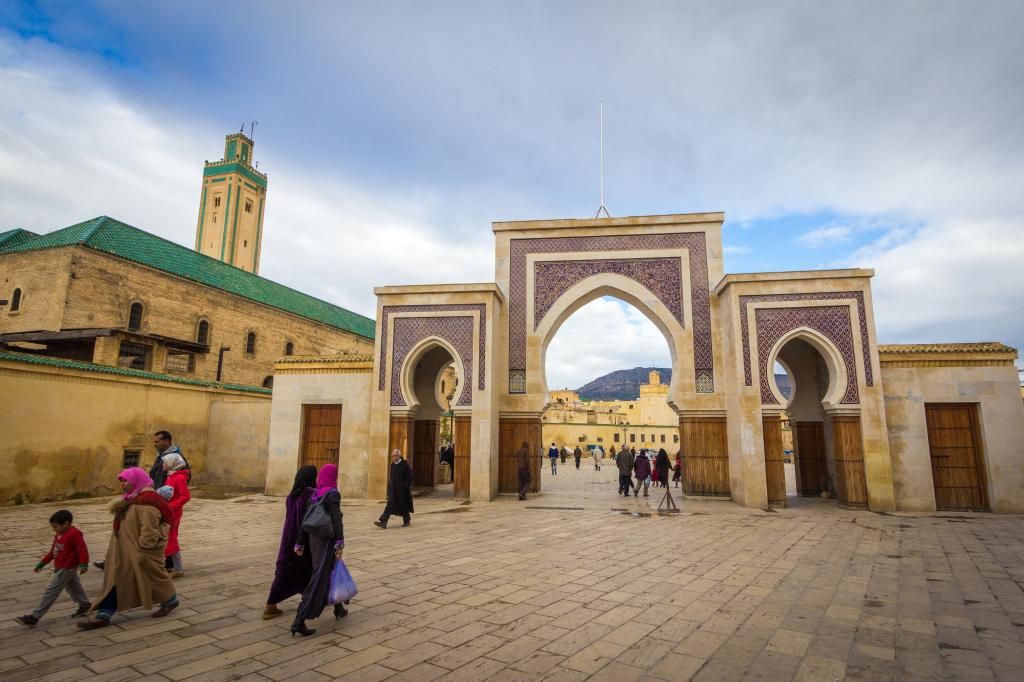 The Gates of FesA day in Fes usually begins by passing through Bab Rcif, one of the 39 babs—or gates—found along the walls the old city. Along with Marrakech and Meknes, Fes is one of the old imperial cities of Morocco.
The Gates of FesA day in Fes usually begins by passing through Bab Rcif, one of the 39 babs—or gates—found along the walls the old city. Along with Marrakech and Meknes, Fes is one of the old imperial cities of Morocco.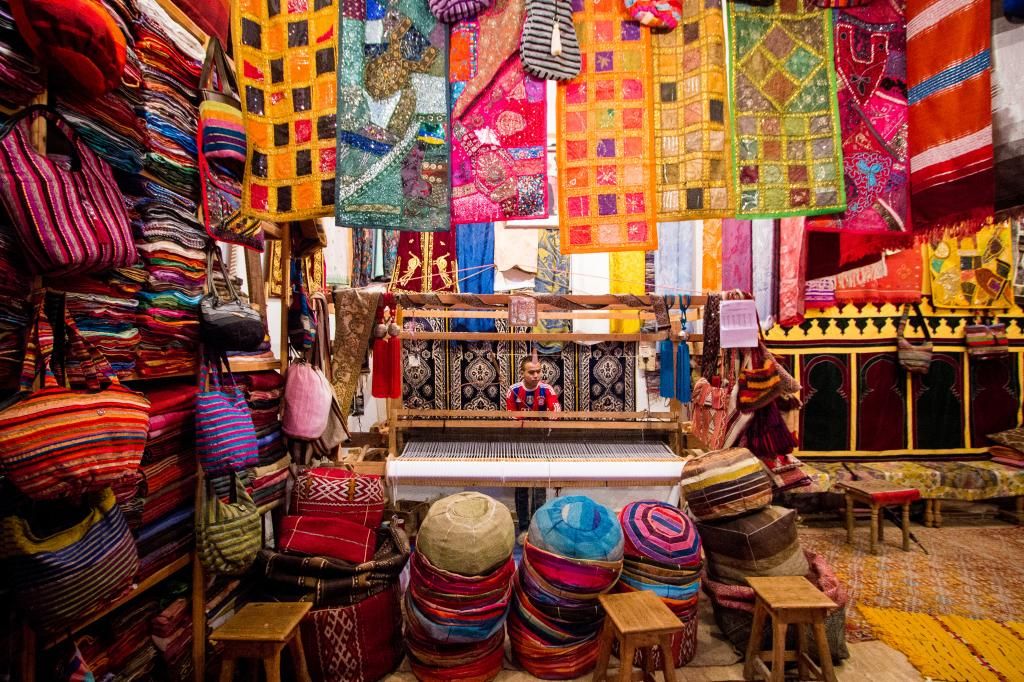 Carpet ShopA local man works the loom in a traditional Moroccan carpet shop. Morocco is a shopper’s paradise where one can buy high-quality handmade goods for cheap. There are no set prices — all transactions are conducted by bargaining.
Carpet ShopA local man works the loom in a traditional Moroccan carpet shop. Morocco is a shopper’s paradise where one can buy high-quality handmade goods for cheap. There are no set prices — all transactions are conducted by bargaining. Leather TanneriesFes’s famed leather tanneries are one of the city’s most visited attractions. For a small fee, local shopkeepers will allow you to view the multi-colored spectacle from one of the many balconies overlooking the tanneries. Be prepared for a pungent odor.
Leather TanneriesFes’s famed leather tanneries are one of the city’s most visited attractions. For a small fee, local shopkeepers will allow you to view the multi-colored spectacle from one of the many balconies overlooking the tanneries. Be prepared for a pungent odor.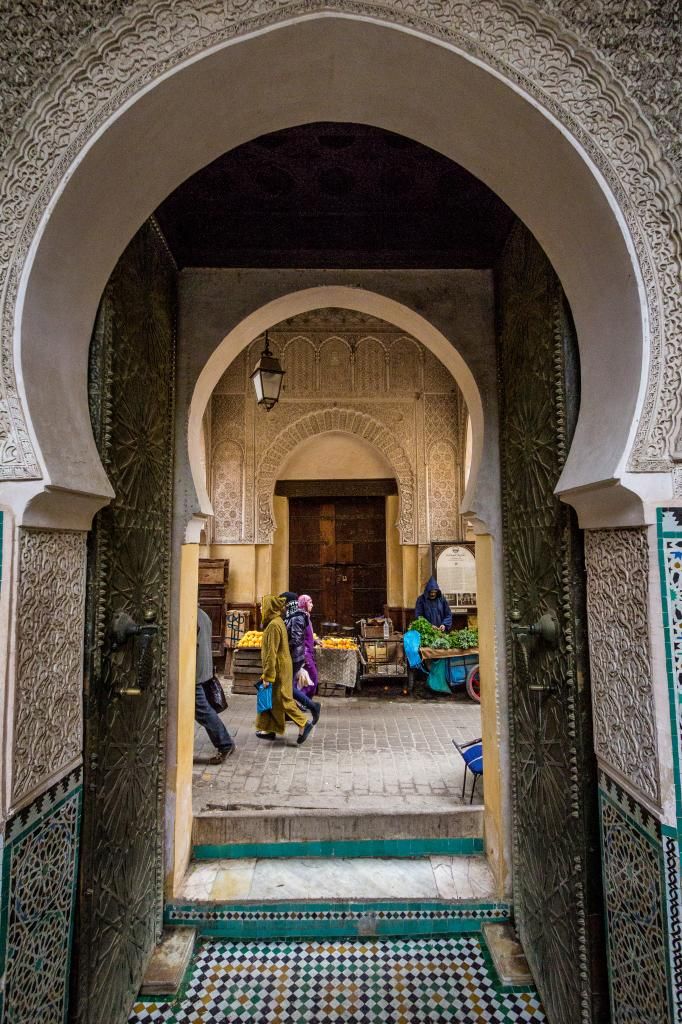 Bou Inania MadrasaIntricate carvings adorn the entry hall of the 14th century Bou Inania Madrasa. Like the Ben Youssef Madrasa in Marrakech, this building functioned as a religious educational institute.
Bou Inania MadrasaIntricate carvings adorn the entry hall of the 14th century Bou Inania Madrasa. Like the Ben Youssef Madrasa in Marrakech, this building functioned as a religious educational institute.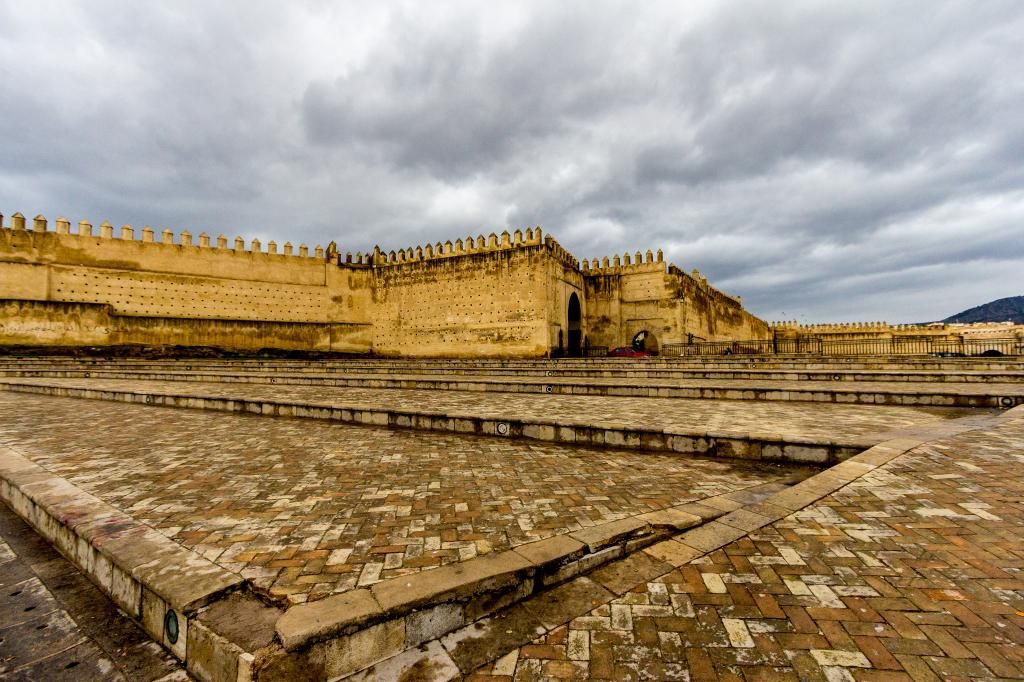 Protective WallsAs one of Moroccan’s imperial cities, Fes’s rulers took great pains to fortify it. Five miles of massive walls surround the old city, protecting it from all sides.
Protective WallsAs one of Moroccan’s imperial cities, Fes’s rulers took great pains to fortify it. Five miles of massive walls surround the old city, protecting it from all sides.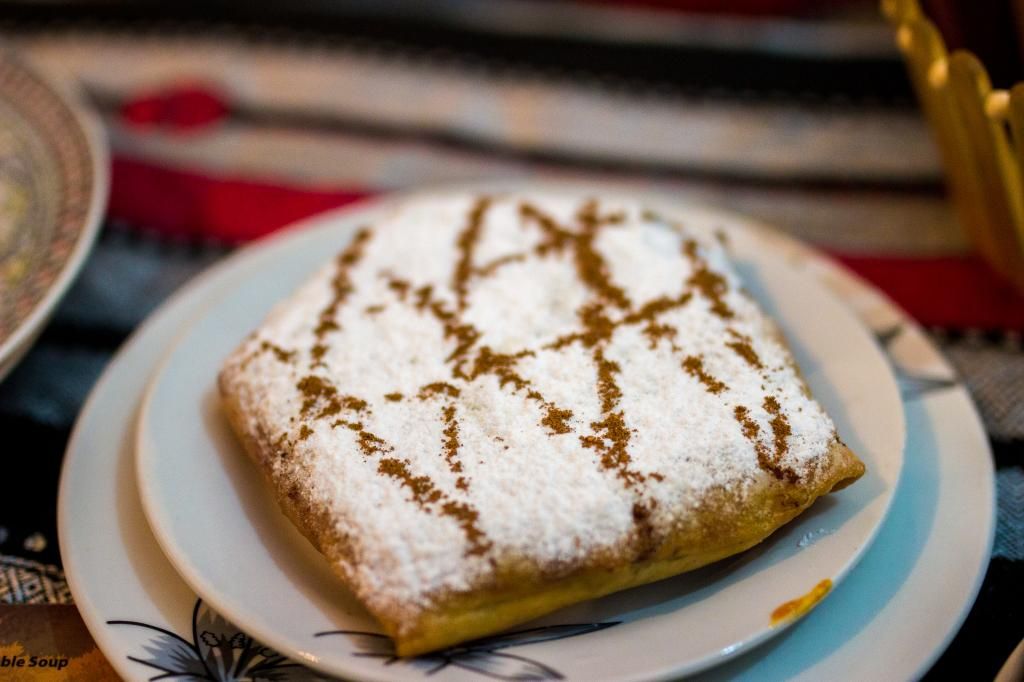 PastillaPastilla, a gastronomic specialty of Fes, is a meat pie traditionally made with pigeon and coated with powdered sugar. Nowadays, they are commonly made from chicken, though some restaurants still offer the pigeon variety.
PastillaPastilla, a gastronomic specialty of Fes, is a meat pie traditionally made with pigeon and coated with powdered sugar. Nowadays, they are commonly made from chicken, though some restaurants still offer the pigeon variety. The Holy City of Moulay IdrissAn hour away from Fes sits the picturesque hilltop city of Moulay Idriss. One of Morocco’s holiest sites, it was here that the Arab prince Moulay Idriss laid the foundation for the kingdom of Morocco. A great-great grandson of the Prophet Muhammad, Moulay Idriss fled to Morocco after a failed attempt to overthrow the Abbasid Caliphate. He founded the Idrisid dynasty and brought Islam to the region. After his death, his subjects laid him to rest in the city that now bears his name.
The Holy City of Moulay IdrissAn hour away from Fes sits the picturesque hilltop city of Moulay Idriss. One of Morocco’s holiest sites, it was here that the Arab prince Moulay Idriss laid the foundation for the kingdom of Morocco. A great-great grandson of the Prophet Muhammad, Moulay Idriss fled to Morocco after a failed attempt to overthrow the Abbasid Caliphate. He founded the Idrisid dynasty and brought Islam to the region. After his death, his subjects laid him to rest in the city that now bears his name. Meknes After RainThe main square of Meknes after an afternoon shower. Following the overthrow of the Saadian dynasty by the Alaouites, Moulay Ismail moved the capital of Morocco from Marrakech to Meknes. Though his successor moved the capital back to Marrakech after his death, the Moroccan king managed to fill the city with hundreds of monuments that still stand as a testament to Meknes’s golden age.
Meknes After RainThe main square of Meknes after an afternoon shower. Following the overthrow of the Saadian dynasty by the Alaouites, Moulay Ismail moved the capital of Morocco from Marrakech to Meknes. Though his successor moved the capital back to Marrakech after his death, the Moroccan king managed to fill the city with hundreds of monuments that still stand as a testament to Meknes’s golden age.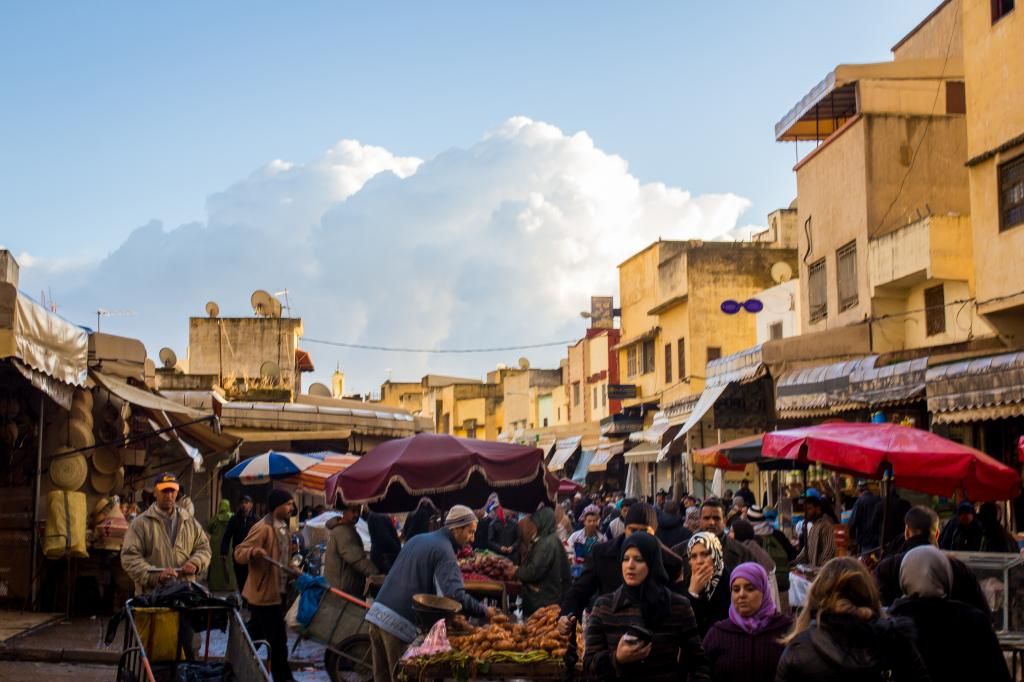 Market DayVisitors to Fes and Marrakech cannot help but feel overwhelmed by the ceaseless attention directed at them by the locals. Not so in Meknes, a city off the beaten path. As only small numbers of tourist visit the city, the vendors are more concerned with doing business with locals and generally leave foreigners alone.
Market DayVisitors to Fes and Marrakech cannot help but feel overwhelmed by the ceaseless attention directed at them by the locals. Not so in Meknes, a city off the beaten path. As only small numbers of tourist visit the city, the vendors are more concerned with doing business with locals and generally leave foreigners alone.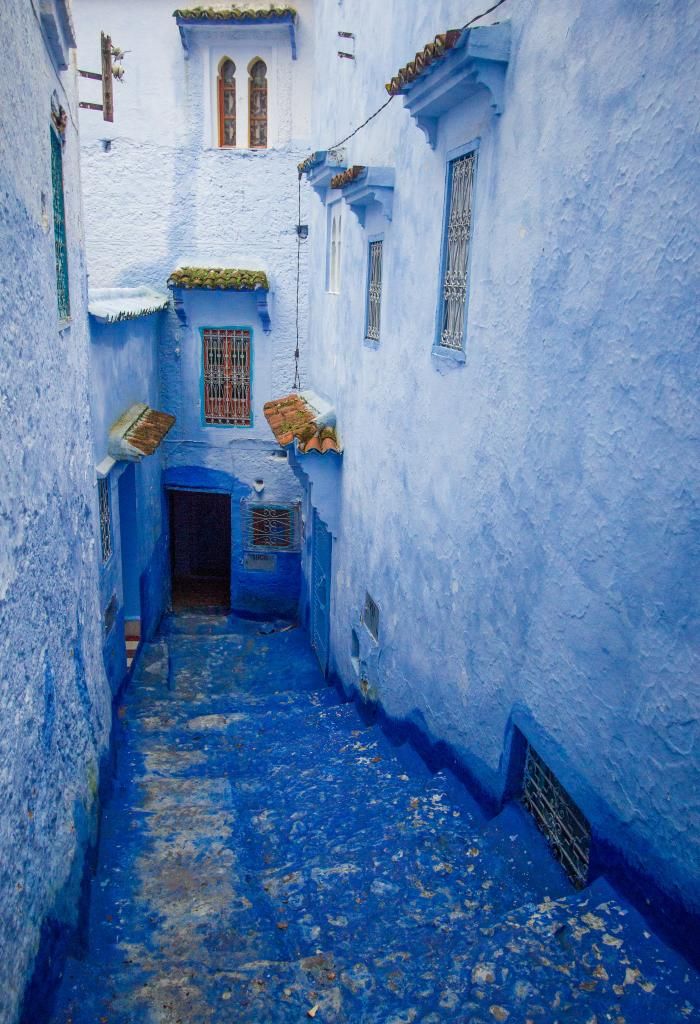 Chefchaouen, the Blue City A four-hour bus ride from Meknes takes you to the mountaintop village of Chefchaouen. In the old days, it was a haven for Jewish refugees escaping from the Spain Inquisition. The Jews have since left, but their traditions remain. The majority of buildings in the old medina retain a coat of blue—the color of divinity in Judaism. It is this ubiquitous characteristic that drives thousands of backpackers to Chefchaouen each year.
Chefchaouen, the Blue City A four-hour bus ride from Meknes takes you to the mountaintop village of Chefchaouen. In the old days, it was a haven for Jewish refugees escaping from the Spain Inquisition. The Jews have since left, but their traditions remain. The majority of buildings in the old medina retain a coat of blue—the color of divinity in Judaism. It is this ubiquitous characteristic that drives thousands of backpackers to Chefchaouen each year.
